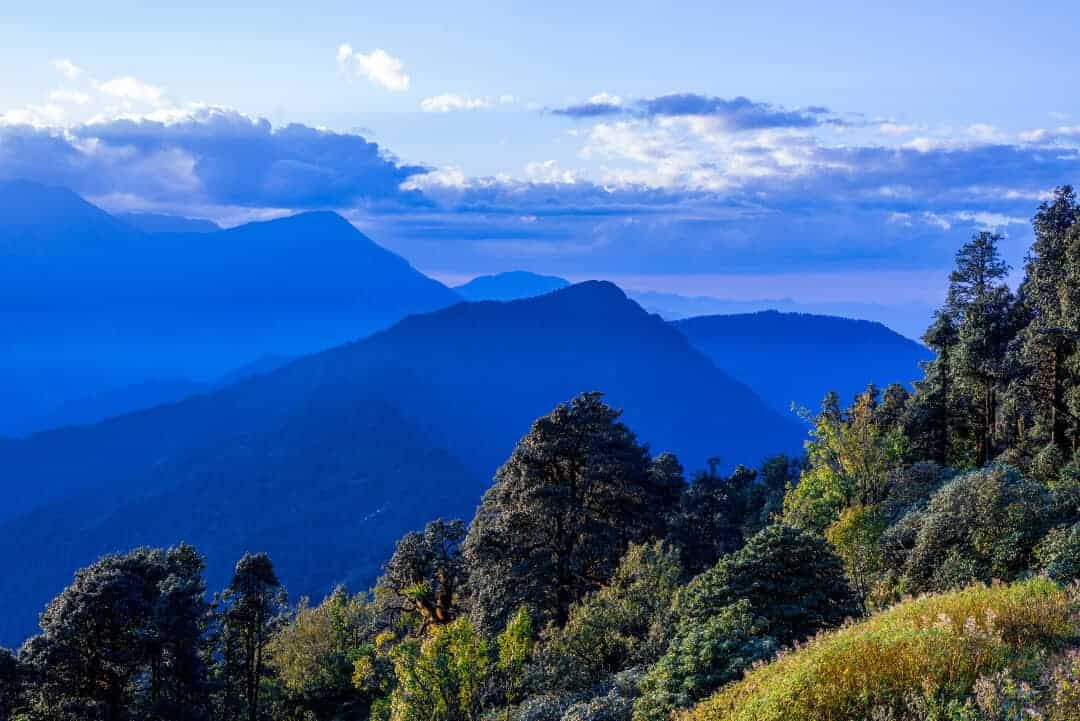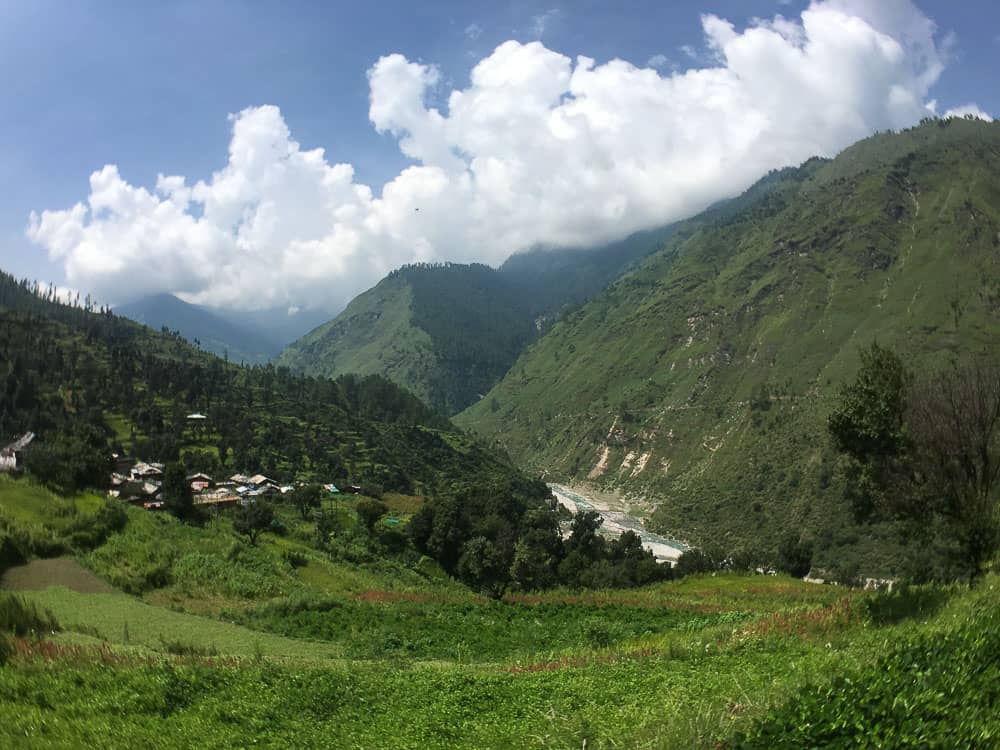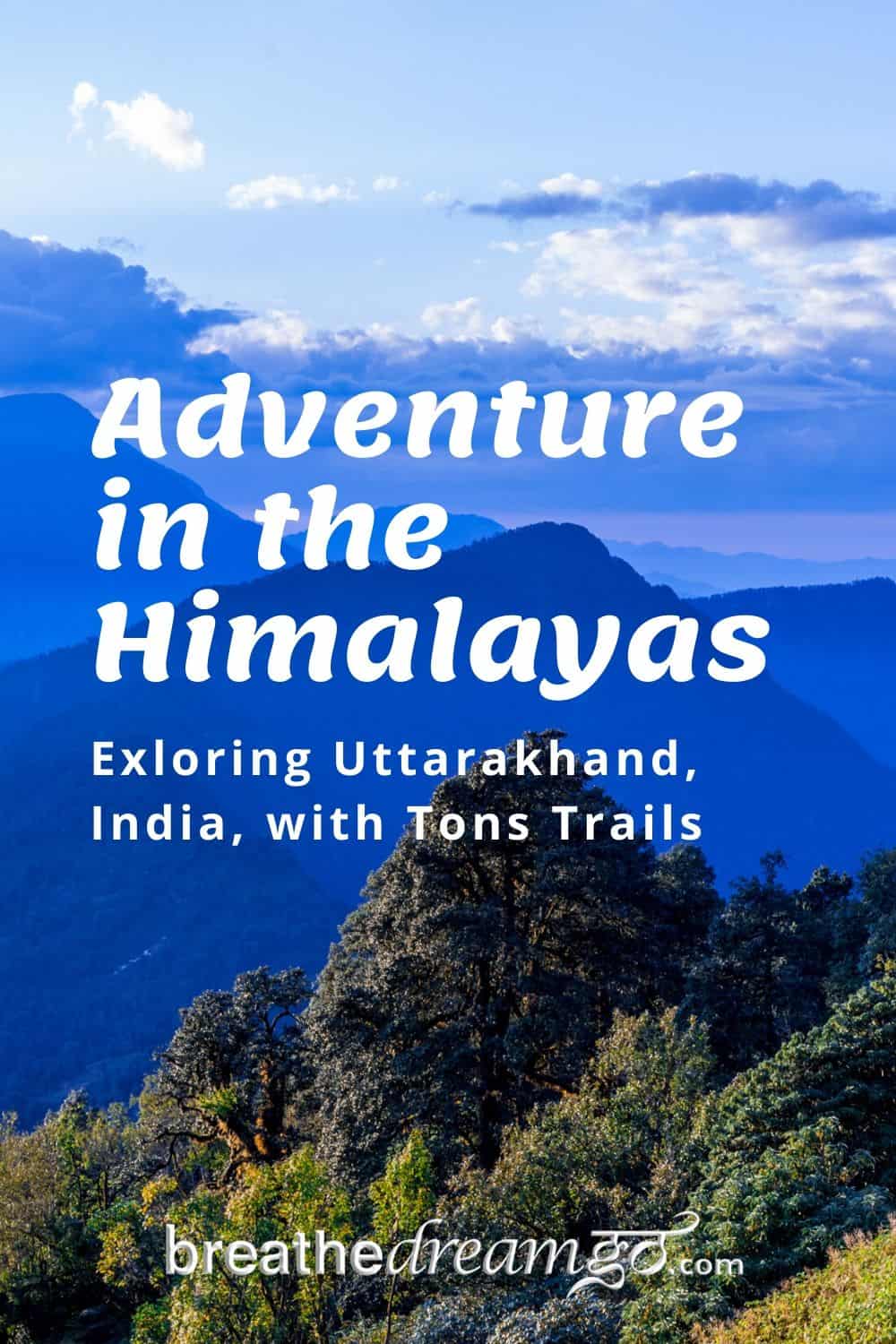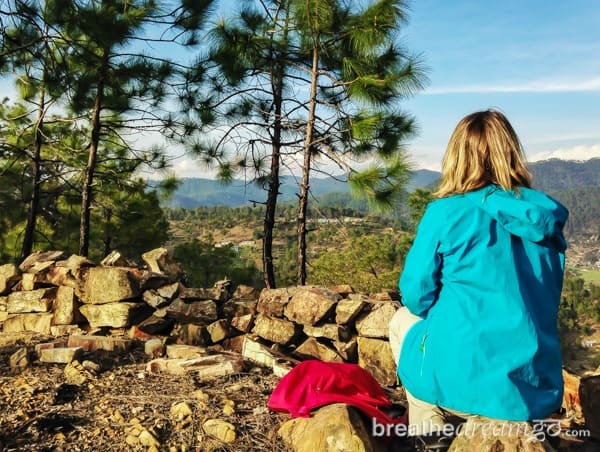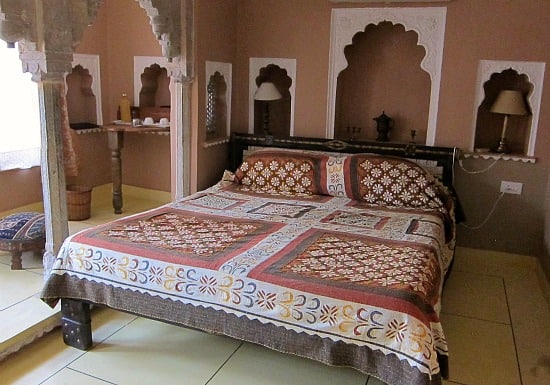Table of Contents
Himalayan adventure in the villages of Uttarakhand, India with Tons Trails
Are you the type of traveller who likes to go way off the beaten path? Does the idea of a Himalayan adventure to visit remote villages, untouched by tourism, appeal to you? Would you love the opportunity to venture up into the Himalayas of Uttarakhand, India to see pristine mountain vistas and experience authentic rural Indian village life? Are you itching to go to unexplored and natural places in India? Then this post is for you — it’s about my experience on the Tons Heritage Trail in the Indian state of Uttarakhand, September 2019.
I also thought I was an intrepid, adventurous traveller who delighted in authentic experiences and loved going off the beaten tourist trail until I ran into a few, um, “discomforts” … but more about that later! First the important details you need to know. The Tons Valley is a drop-dead gorgeous part of Uttarakhand state in north India. It’s up in the Himalayan region — most of Uttarakhand is mountainous — in the northwest corner, literally on the border of Himachal Pradesh.
Tons Valley Shop
During the pandemic, Tons Trails tours opened the Tons Valley Shop to support local farmers: The Tons Valley Shop is an online market-place run by 37 villages in the remote Garhwal Himalayas. Farmers bring their produce the Tons Valley Shop, and they bring it to you with the assurance of quality and purity. Each package goes out with love and gratitude, and with the name of the farmer that has nurtured and grown the produce for you.
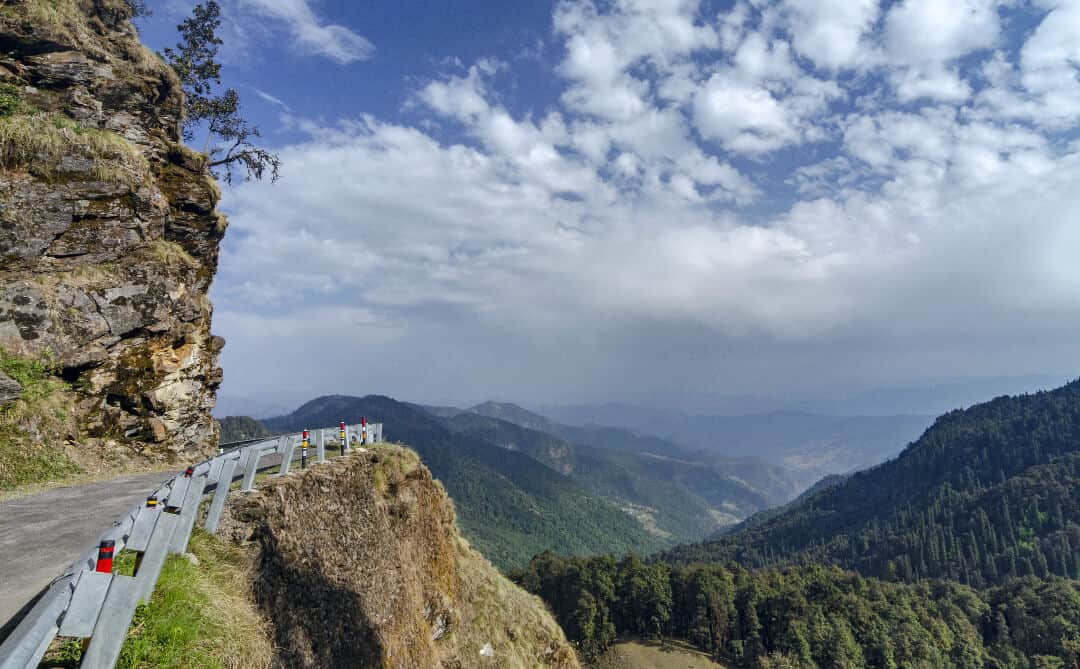
The only people who make it up to this part of the state are either going on the Char Dham pilgrimage to one of the sources of the Ganga (Ganges) River, or they are looking for off-beat treks as far from civilization as possible. And that’s what makes this area so appealing to adventurous tourists. Here, you see only small Himalayan villages, stunning mountain scenery, flowing mountain streams, and charming pagoda style temples. This is one of the best places to visit in July in India, and one of the best places to visit in August in India, too.
NOTE: Thanks so much to Anand Sankar and Tons Trails for hosting me on this amazing adventure in the Himalayas. The company, Tons Trails, has several itineraries for exploring the beautiful Tons Valley, that include hiking, camping, harvests, and festivals. Learn more here on the Tons Trails website.
The Tons Valley is currently not considered to be a tourist destination, it’s not considered one of the best places to visit in Uttarakhand, not on the list of top Uttarakhand destinations such as Kumaon and Rishikesh. But this is the reason Anand Sankar started his company Tons Trails — to give travellers an authentic Himalaya trip and Himalaya adventure unlike any other they have experienced before. Anand is virtually the only “tour operator” in the region and he is absolutely passionate about it.
Off the map in a Himalayan village of India
Tons Trails started in June 2013 when Anand and his team began offering hikes to tourists through the 14 kilometre long village of Kalap, located on a mountain-top ridge in the Tons Valley. Anand says, “The Tons Valley is a hidden jewel in the Indian Himalayas. The valley offers a rich variety of experiences that blend exciting adventure and immersive culture for the discerning traveller. Lying in the far-northwestern region of the state of Uttarakhand, it is just 200 kilometres from the nearest airport in Dehradun and 400 kilometres by road from Delhi.”
Since then, Anand has been branching out to include some of the other 36 villages in the Tons Valley. He has created several experiences, including the one I did, The Tons Heritage Trail, inspired both by the culture and geography of the region, and by his experience with andbeyond on a luxury African safari.
All of the experiences Anand creates features a few hallmarks, and the Tons Heritage Trail was no exception. His trips are all-inclusive, which means after you pay you never touch your wallet again, and feature a leisurely pace, a mix of trekking and relaxing, a focus on interacting with the local people and learning from them, and high-end hospitality that includes best-in-industry practices.
“You know what our guests love?” Anand asks. “In the middle of nowhere, among breath-taking scenery, stop and give them a cup of hot coffee or tea.”
Anand has literally put Kalap Village and the Tons Valley on the map … by taking people off the map.
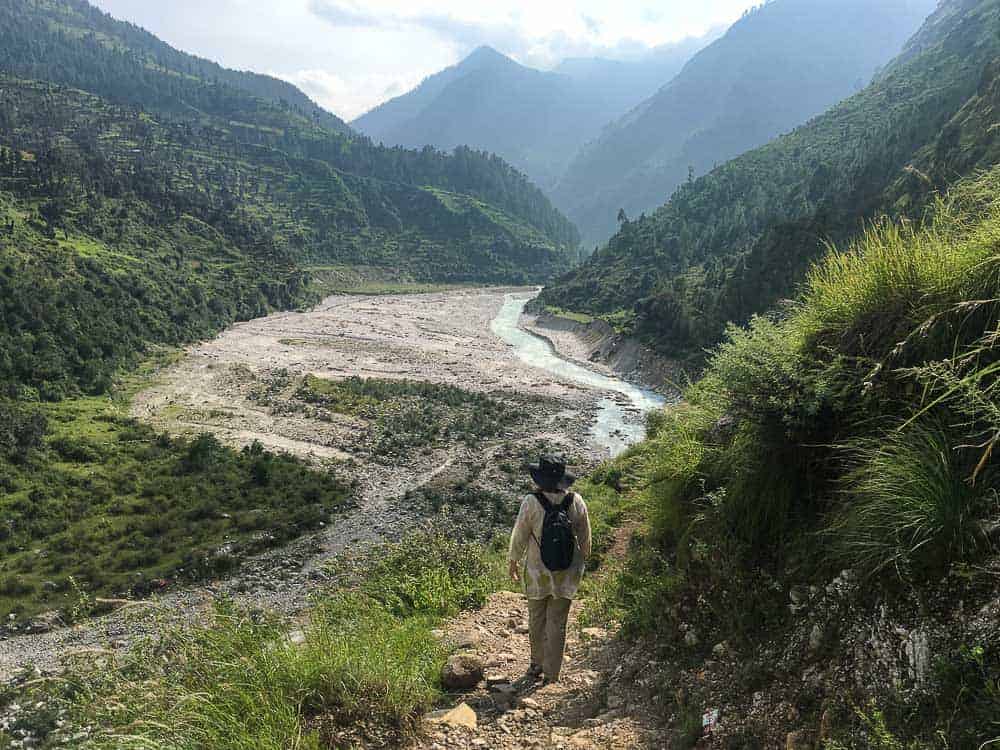
The Tons Heritage Trail : A Himalayan adventure
Like all Tons Trails experiences, we started out from Dehradun and drove most of the day to get to an overnight stop in Sankri village. The scenery all the way was stunning, as we drove through Mussoorie and followed the Yamuna River up into the Himalayas. For about half the drive, we were on the same route Char Dham pilgrims take to get to Yamunotri, one of the four sacred places in Garhwal, Uttarakhand that are said to be the sources of the Ganga River.
But at about the halfway point, the pilgrims turned right and we turned left and this is when things started to get exciting, and also very beautiful as we were now in a part of the state that is lower on population and higher on natural beauty. Along winding, and sometimes nerve-wracking, mountain roads we went, with valleys opening up before us, cut through by sparkling rivers, the sky overhead deep blue and crystal-clear.
We then crossed the ridge up into the Himalayas to enter the valley of the Tons River. The Tons River is a major tributary of the Yamuna River, 70% of the water in the Yamuna river that you see in the plains, actually comes from the Tons River.
We stopped occasionally for chai — thick, milky, and sweet the way the locals like it. I took every advantage of any restrooms we came across, but to be honest, they sometimes even dipped below my standards, and my standards are pretty low after so many years of travel in India. This is not a tourist region, so there are almost no tourism amenities, and that’s largely the appeal. Putting up with discomfort is often worth it to visit such an untouched region.
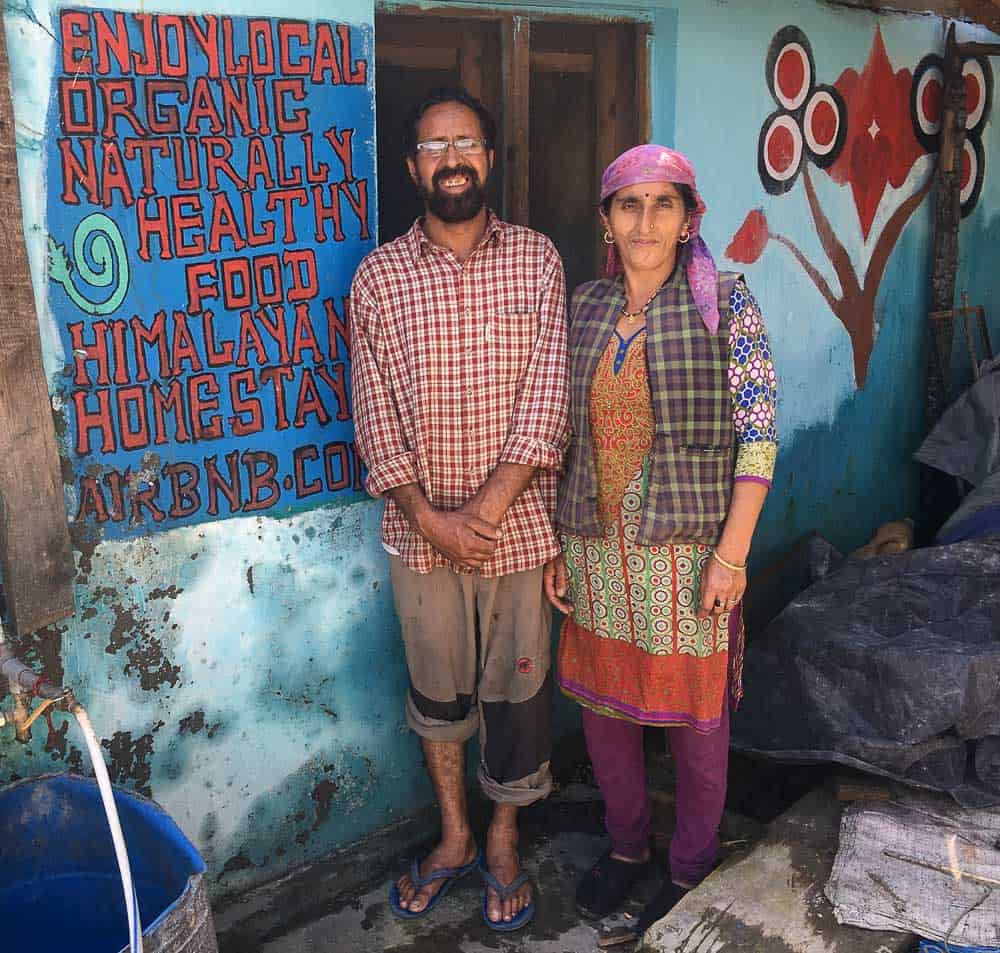
Our first night’s stop was in a village that is a jumping-off point for trekkers, so we were able to stay in a decent small hotel and we had a couple of very unique meals with local people who know how to treat a guest. Their home was very basic and simple — the guest house they used to run had recently burned down — so we sat on the floor, on cushions, around the fire as they cooked a very delicious vegetarian dinner.
This is the kind of experience you get when you go off the tourist trail — authentic, heartfelt, and memorable. The setting was basic, the family were cooking and serving with their hands, and we shared a small space with few amenities. They made special non-gluten chapatis for me, smothered in ghee, and I felt their warmth and love though we did not share a language.
The next day we were off to Kotgaon village, just a short drive away. We stopped at the Tons Valley Health Centre, founded by the Kalap Trust, a non-profit organisation that supports the communities in the Tons Valley. The centre functions in a small building overlooking the valley and directly across from Kalap Village, spread out on a ridge across the valley. Here I learned that travelling with Tons Trails, supports the community projects run by Kalap Trust. On a beautiful clear, sunny day, we walked up the hill to the main part of Kotgaon village where I saw a Shiva temple unlike any I had seen before, and ate crisp, green apples right off the trees in a local orchard.
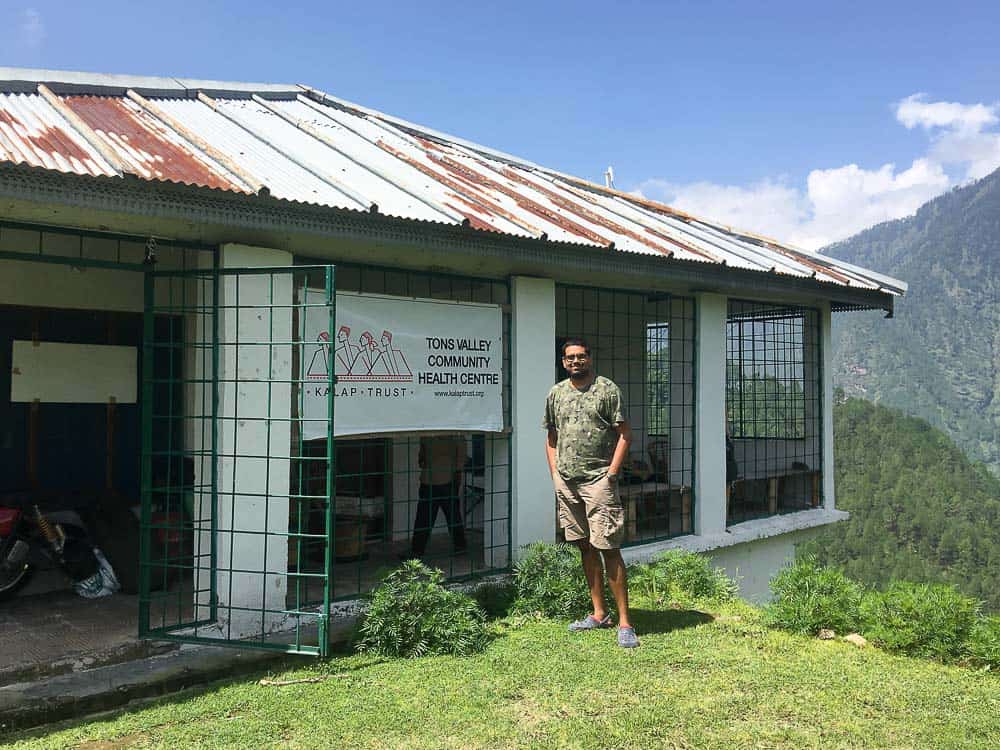
In the afternoon, we drove along rough, winding mountain rides, through thick forests and alongside the rushing Supin River. It’s a beautiful, unspoilt region, where we came across only locals — we saw virtually no tourists. When we reached Netwar village, we got out of the truck to see the picturesque location at a fork in the river, this is where the mountain rivers Supin and Rupin join to give birth to the Tons River. We discovered a temple festival here, joined the festival for a short time, and delighted in the music both young and old were making on drums and a unique Himalayan horn.
Finally, in the late afternoon we reached our destination, the Himalayan village of Doni. This is the kind of village you see in old copies of National Geographic. It has remained almost unchanged, which seems almost like a miracle in this day and age. The only concession to modernity seems to be electricity, a recent innovation, and you can see the wires strung through the village.
Otherwise, it really was like stepping into the pages of National Geographic. There are no roads in the village itself, just narrow footpaths between surprisingly large, heavy wooden buildings. Some of the buildings are up to 400 years old, and four and five stories tall. In the centre is the temple, a pagoda shaped wood structure with an open area around it for gatherings.
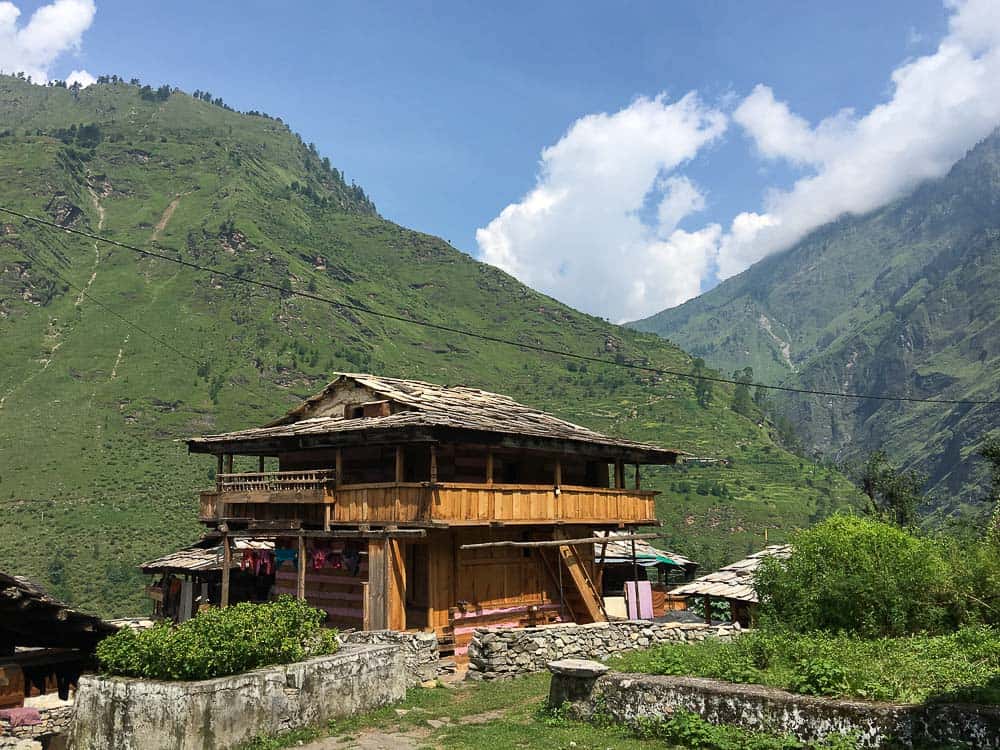
Village life in the Himalayas in India
We walked on a downward slope through the village until we reached the house we were to stay in — there are no hotels, or even guest houses or homestays, in Doni Village. We were staying with a family in their very large house. When we arrived in the late afternoon, we were served hot chai and snacks, and the children of the family began to spontaneously sing to us, making us feel very welcome.They could not have done more to welcome us, they opened their home to us — another incredibly warm, hospitable gesture — but I felt at odds in the house.
I could not understand the architecture, or the layout. I did not get how this operated, as a house, as it was unlike anything I had ever seen or experienced before. I was honestly experiencing a kind of culture shock by the strangeness of the design — as strange as that may sound!
Waking up in Doni Village in the Himalayas
The house was big — very big — and entirely made from wood, but most of it was exposed to the weather. The living space was a corridor around a central block. There were some small rooms, here and there, but I never saw what we would consider a living room or kitchen, per se. There were platforms around the edge of the second floor that acted like a combination balcony, sitting area, and sleeping bunk. I was invited to sleep here, but still wasn’t quite sure, so the family turned over one of their own bedrooms to me.
Plus, there was no bathroom. To go to the toilet or wash meant leaving the house and walking up the footpath to a small concrete bunker-type building. So off, I went … flashlight in hand … only to discover very large, black Himalayan spiders inhabiting the washroom. I don’t have a lot of fears but monster spiders are one of them. I basically went running in the opposite direction. And never looked back.
Again, the family came to my rescue. They fixed up a spot for me to wash and pour the water out the window, and I was allowed to use the emergency toilet — a hole in the floor in a storage room.
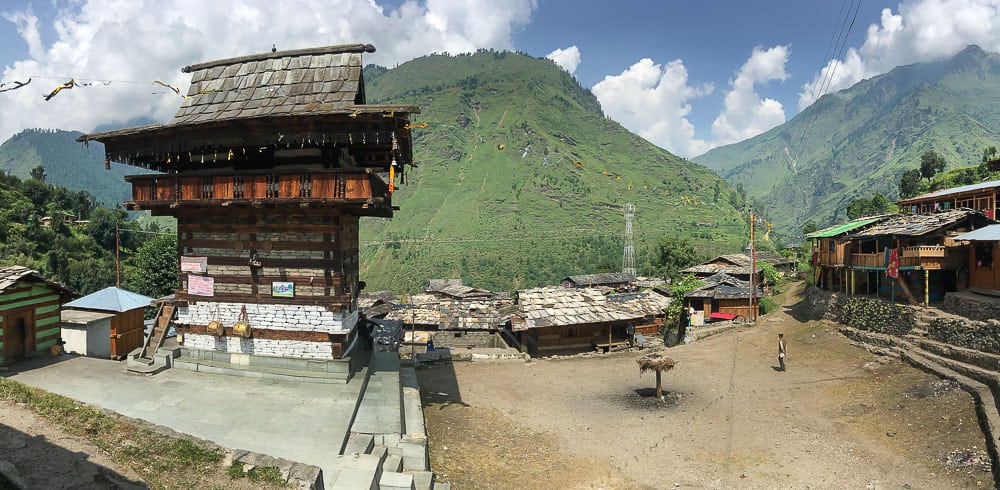
But, wow, the strangeness and discomforts and spiders aside … what an amazing experience and what a beautiful location. Doni is incredibly picturesque and the view of the Rupin Valley and river, the mountains and clear blue sky, is absolutely breath-taking. It’s hard to explain how crystal-clear the air is here, how fresh and uplifting, and how peaceful. With no road or traffic, the sounds came from cows mooing, dogs barking, children playing, birds singing, or devotional chants and music.
I woke in the family’s simple bedroom — just two single beds, a table, and walls lined with portraits of Indian film stars and Hindu gods — very early, just before dawn, and was drawn to one of the empty sleeping/sitting platforms. I took my sleeping bag with me, and bedded down for the last hour or two, eyes fixed on the incredible view of the sun slowly coming up over the mountains. It was one of those magic moments, the highlight of the trip, and the reason I travel.
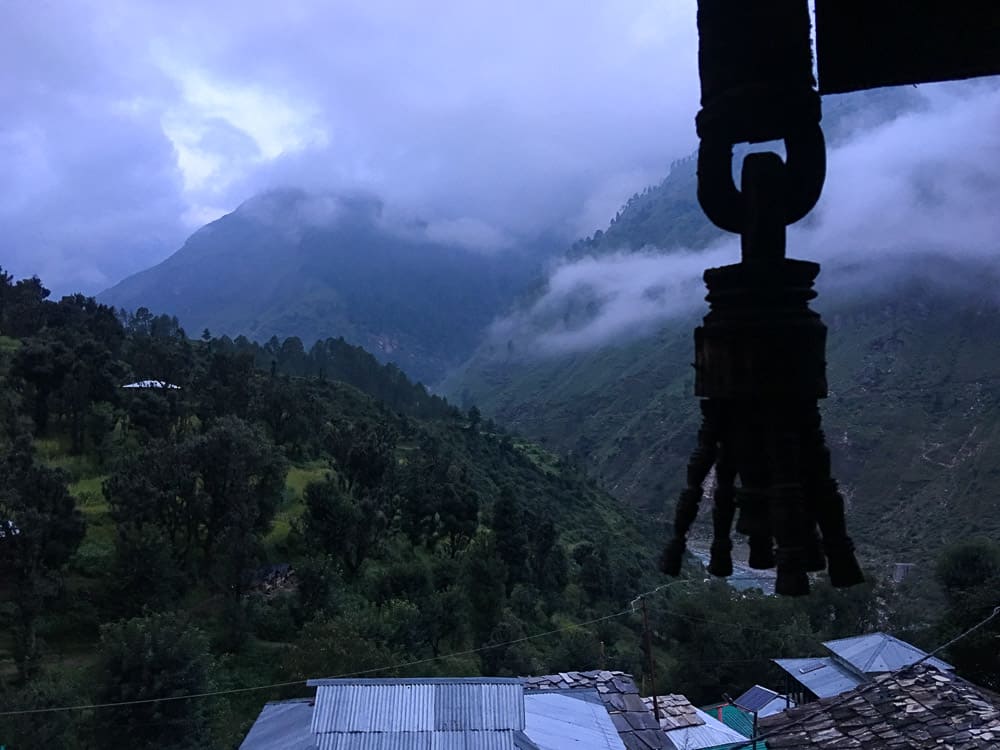
The peace and beauty of that morning scene in a remote Himalayan village, where everything was brushed with mauve light and the cool air touched my skin, is beyond my ability to capture in words. But this is the reason I travelled for many hours on bumpy roads, slept on a wooden platform open to the elements, and faced various other discomforts. If you want to have this kind of adventure and experience, you have to leave the well-travelled path, you have to leave conventional notions of tourism behind. And this is exactly the point of Tons Trails and the experiences they offer.
After breakfast we toured the village and then set off for a walk down into the valley, across the Rupin River, and up the hill we could see from the village to an even more remote village, tiny Khanna — a place that is well and truly off the grid. No road at all goes to Khanna, to get there, you have to walk up a steep, rocky mountain path.
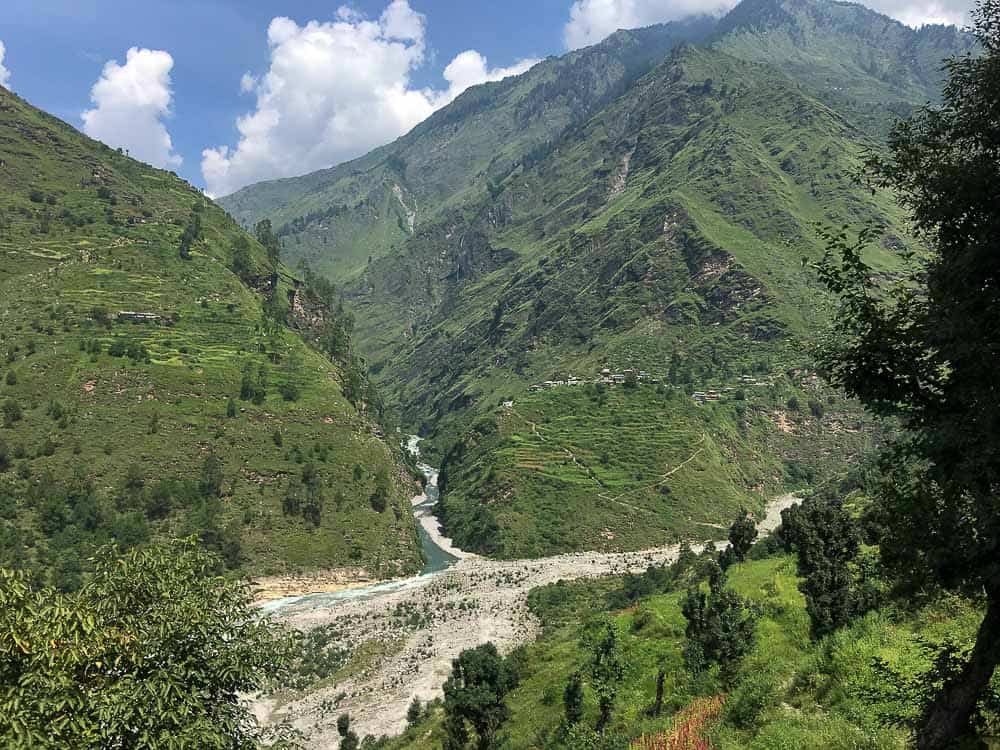
From Doni, all you can see of Khanna, across the valley, is a pagoda shaped temple. It truly looked to me like Shangri La, and it felt that way too, as I struggled to climb the steep slope at an altitude much higher than what I’m used to. Luckily, Anand and his team are well prepared for people like me, and helped me cover my skin with leaves (I forgot sunscreen!), and mixed me an electrolyte drink when the altitude and climb made me feel a bit nauseous.
It was worth it. Khanna is a charming village and we were, once again, greeted with incredible warmth in a family home. We sat on the outdoor platform of the home and ate a simple but delicious vegetarian lunch with rice. Then, they invited us to rest inside their bedroom before our hike back.
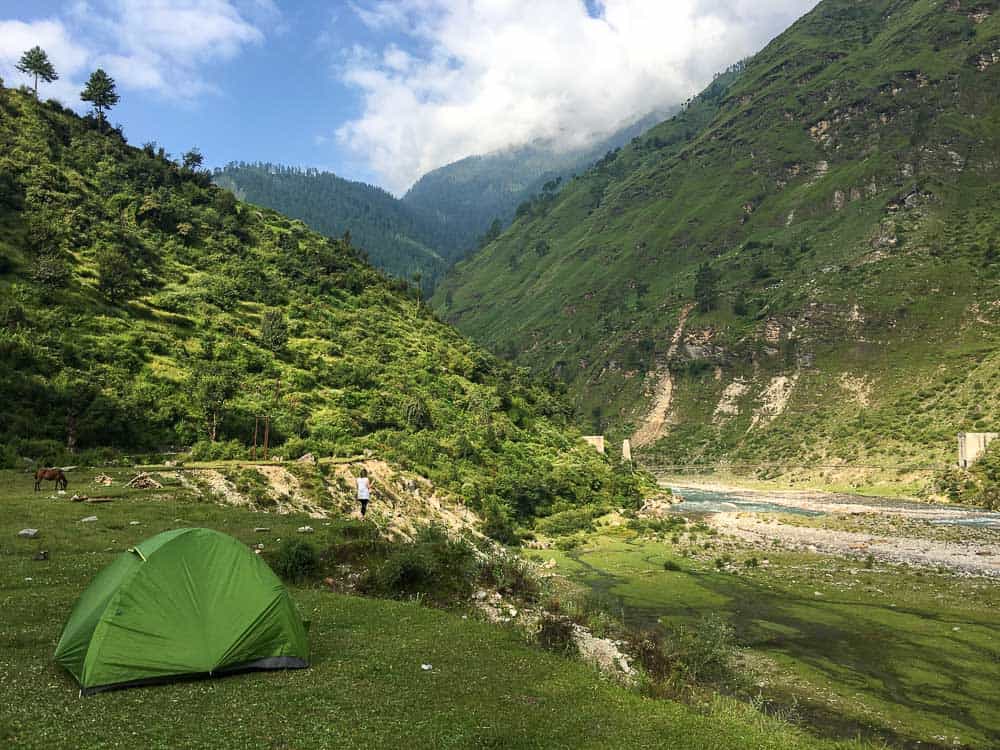
Camping in the Himalayas is a true adventure
Anand made a quick decision to set up camp on a wide expanse of lawn next to the Rupin river, and sent his team ahead to move everything, and get the tents set up. We walked back down to the river and alongside it to the campsite, where a hot tea and snacks awaited us. Anand showed incredible foresight to bring along all the camping gear, though we had not planned to camp, and oh my — I am so glad he did.
I loved camping by the side of the rushing Himalayan river, with the mountains all around us, and the site of the Khanna pagoda temple perched on the hill across the valley, like a utopian siren call to dreams of adventure. I didn’t think anything could beat the morning in the Himalayan home, but waking up at the campsite, with mist floating above the river, was a near-mystical experience.
This was not glamping, but I have to say, the Tons Trail team thought of everything — from a thick sleeping mat, to a dining tent, and even a toilet tent! I was completely comfortable, and enjoyed the food cooked over an open fire.
It was very, very hard to walk away from that campsite and back to the truck for the long drive back to “civilization.” The Tons Trail team thought of everything, even the return trip and the decompression. Our last night was spent at a charming guest house and homestay in Dehradun, and we all went for dinner before our goodbyes.
The Tons Heritage Trail Himalayan adventure took me to a completely different world, where I experienced nature at her pristine best, human warmth and generosity of spirit, and some profound mystical moments. Yes, it was challenging at times, and I was out of my comfort zone — but oh my, the rewards for this kind of adventure travel are beyond priceless.
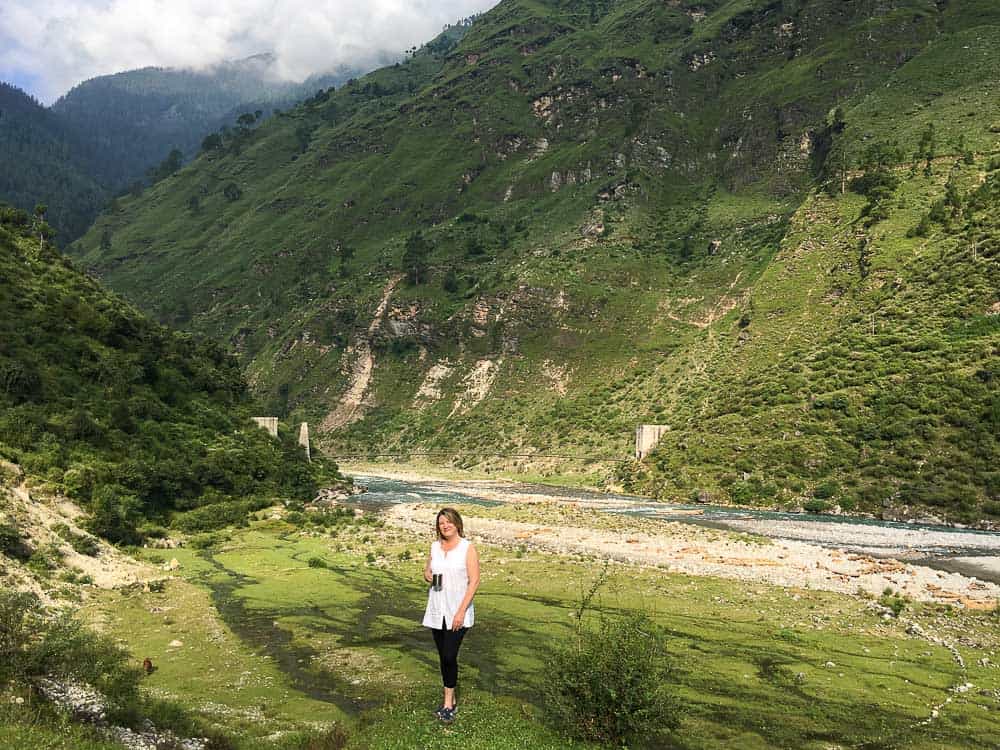
Gallery of photos
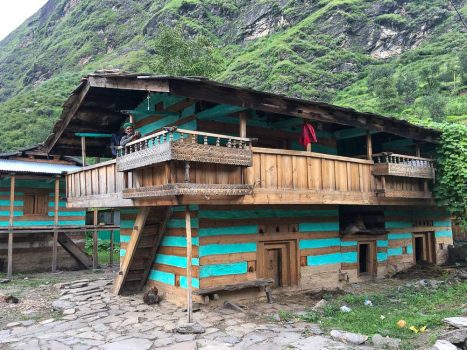
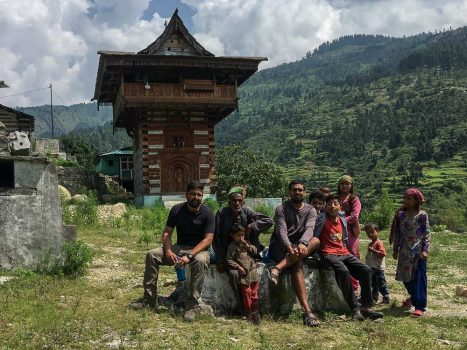
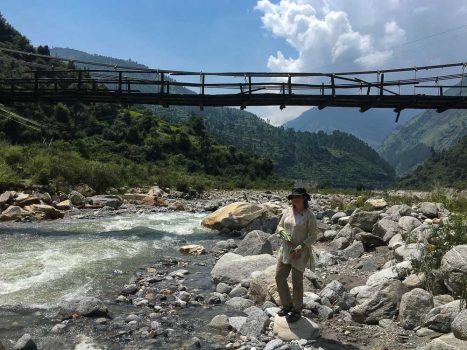
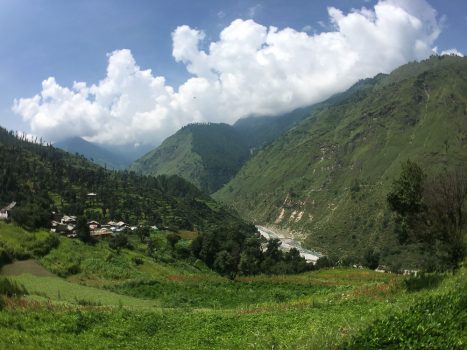
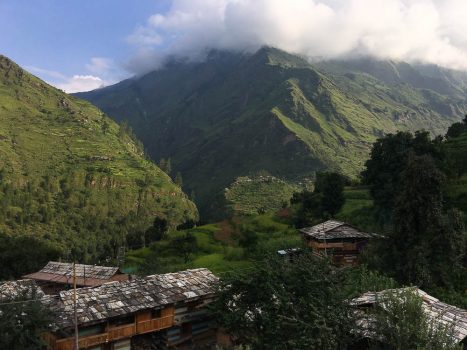
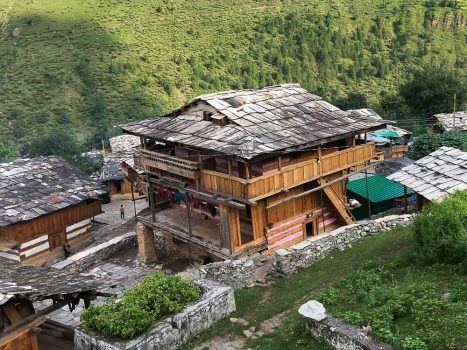
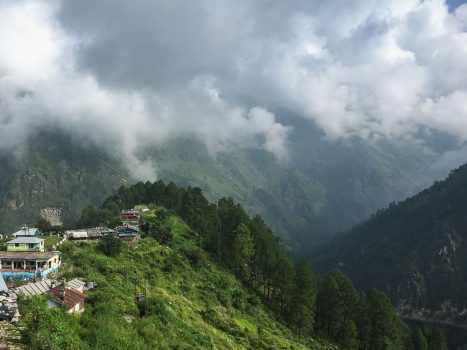
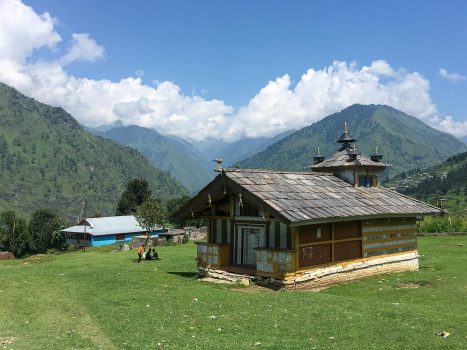
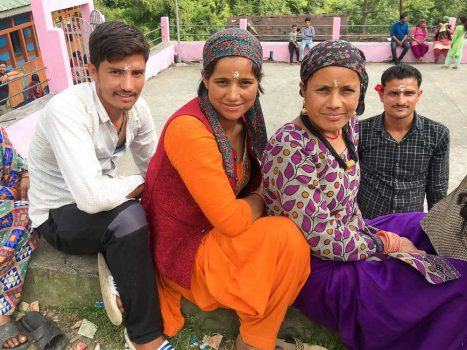
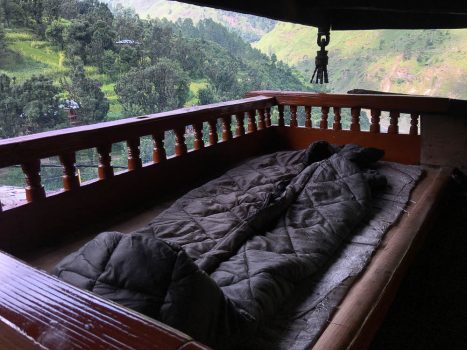
If you enjoyed this post, you can….
Sign up to The Travel Newsletter in the sidebar and follow Breathedreamgo on all social media platforms including Instagram, TripAdvisor, Facebook, Pinterest, and Twitter. Thank you!


